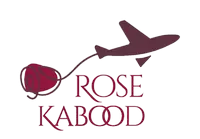Mashhad has the second metropolitan city in Iran—after Tehrān, the national capital. Mashhad is called the holy city of Iran because it is home to the tomb and shrine of Islam’s eighth Shia Imam, Imam Reza. Every year millions of pilgrims from around the world flock to this shrine, giving it a palpably spiritual and multinational feel.
Imam Reza’s shrine_Mashhad
The holy shrine of Imam Reza (the 8 leader of Shia) and the surrounding buildings from the complex of Astan_e_Quds_e Razavi. The complex consists of courtyards of Atigh (old) and new, the mosque of Goharshad, seminaries of Balasar, Dodar and Parizad, museum and library. The mausoleum of Sheikh Bahaee; Dar_ol Siyade and Dar_ol hefaz; Towhid Nameh; Balasar Mosque; Hatam Khani Dome.; Dar_ol Ziyafeh, Dar_ol Soror , Dar_ol Salam. Mirza Ja’far and mostashar Seminaries; the Golden Water Foutain; etc. The shrine of Imam Reza is a rectangular space that has been reconstructed several times. The first dome has been erected by Sultan Sanjar the Seljuk and his minister Sharaf_od din Qomi. It was made of tiles. The interior of present dome, decorated with mirror_worked vaults, belongs to that time. The outer dome is based on a 13.44 meters wide stem. It is nearly 31 meters high. The beautiful big inscription of the dome, written by Alireza Abbasi , in Thulth style describes the pilgrimage of King Abbas and the decorations ordered by him inside four figures in Arabic. The grave box belongs to the Qajar era.
Mausoleum of Ferdowsi
The sage Abul_Qasem Ferdowsi, the famous epic poet of Iran, was born about 329 AH in Paz near Tus City. He died in 411 AH. His main work is Shahnameh. His grave had no buildings for years. Finally his grave was recognized in 1926 and building inspired by the Cyrus tomb was erected on his grave. However, this building didn’t last so much and the whole building was completely repaired and reconstructed from 1963 to 1968. A statue of the poet that is made of a white stone stands in a beautiful pool.
Mausoleum of Hakim Khayyam Nishaburi
The sage Abolfath Omar ibn Ibrahim, known as Khayyam Nishaburi, was a philosopher, mathematician, astronomer, and poet of Iran in the 6th century AH. The mausoleum of the sage Omar Khayyam was designed by Hushang Seyhon in a garden that belonged to the poet himself. The mausoleum occupies a 900 square meters ground.
Mausoleum of Attar Nishaburi
The mausoleum of Attar belongs to the Timurid era and has been erected on his grave by Amir Alishir Navaee. Farid_odin Attar was a famous Gnostic and poet of Iran. He is the creator of Manteq_ot Teir and Tazarat _ol Owliya. The present mausoleum is an octagonal building with a tiled dome and four entrances. The tomb is in the center and there is a 3_meter octagonal column in the center. The outer facade has 3 tiled booths.
Fakhr Dawood Caravansarai_Mashhad
The Caravansara of Fakhr Dawood is a mountainous building in the village of Fakhr Dawood near Mashhad. It has an area of 853 square meters. The entrance of the building is in the southern wing. It has a lofty portico roofed with an arch. The guardrooms are on the sides of the entrance vestibule. There are portholes above the alcoves and the rooms on the southern side. They have been used for shooting a well as for allowing light into the space. The outer part consists of the main wall, look out towers, and blind arcades. They increase the beauty of the building. There is a big water reservoir near the entrance portico that supplied water for the travelers. The lofty portico, architecture of the lookout towers, and the brick works show the architectural style specific to the Timurid era. It has been repaired in the following periods, especially in Qajar era.
Qasr_e Khorshid Kalat_e Naderi
The brick edifice of khorshid or Qasr_e khorshid was erected by the order of Nader, the founder of the Afshar dynasty. In lies inside a big 16 by 122 meters garden in the middle of the city of Kalat. It has had three floors. The third on has been destroyed. The present building has an underground and a ground floor. The first floor is octagonal and is based on for rows of stone stairs in a pyramidal shape. The entrances of the building are on the eight sides of the edifice. They lead to the main hall. The main entrance is at the end of the eastern portico. The palace has 12 rooms decorated with paintings and stucco_works. There is a cylindrical two floor tower in the center of the building. It has been the residence of the king and his family. The outer facade has battlements in Mongol_Hindi architecture. There is a round tower on the roof of the building. The tower has pilaster like parts known as Khiyari. The facade is decorated with brown stones bearing figures of flowers and fruits of hot regions. A painting is done on the wall of the eastern part. The inner part is decorated with Koran chapters and gilded paintings. The dark underground of the buildings has probably been the treasury of Nader, a prison, or a tomb.
Shandiz
Located south of Mashhad, Shandiz is famous for its beautiful nature, pleasant weather and sheepskin products. The area holds a number of gardens and waterfalls as well as a park suitable for camping.
Torqabeh
Torghabeh is particularly popular with people in Mashhad primarily because of its proximity, variety of traditional restaurants and souvenir shops. One of its customary local foods is Dizi. Another common choice of food among the frequent visitors of the town is Shishlik, which is grilled lamb and T-bone accompanied by rice.

